-
 Bitcoin
Bitcoin $83,443.6737
-1.76% -
 Ethereum
Ethereum $1,825.6264
-3.20% -
 Tether USDt
Tether USDt $0.9997
-0.02% -
 XRP
XRP $2.0597
-2.32% -
 BNB
BNB $597.9023
-1.48% -
 Solana
Solana $119.3459
-5.03% -
 USDC
USDC $0.9999
-0.01% -
 Dogecoin
Dogecoin $0.1660
-3.39% -
 Cardano
Cardano $0.6523
-3.11% -
 TRON
TRON $0.2359
-1.14% -
 Toncoin
Toncoin $3.8299
-5.08% -
 UNUS SED LEO
UNUS SED LEO $9.3665
0.55% -
 Chainlink
Chainlink $13.1586
-4.88% -
 Stellar
Stellar $0.2618
-2.77% -
 Sui
Sui $2.3705
0.07% -
 Avalanche
Avalanche $18.4778
-4.84% -
 Shiba Inu
Shiba Inu $0.0...01228
-1.59% -
 Hedera
Hedera $0.1637
-2.32% -
 Polkadot
Polkadot $4.0481
-1.61% -
 Litecoin
Litecoin $83.0708
-0.33% -
 MANTRA
MANTRA $6.3449
1.40% -
 Bitcoin Cash
Bitcoin Cash $299.2669
-2.15% -
 Bitget Token
Bitget Token $4.5420
-2.09% -
 Dai
Dai $0.9999
0.00% -
 Ethena USDe
Ethena USDe $0.9999
0.02% -
 Pi
Pi $0.6659
-4.49% -
 Hyperliquid
Hyperliquid $12.4532
-5.21% -
 Monero
Monero $215.7704
-0.13% -
 Uniswap
Uniswap $5.9598
-3.90% -
 Aptos
Aptos $5.2030
-1.76%
What Is Asynchronous?
In cryptocurrency, asynchronous processing empowers nodes to work independently, enhancing scalability, resilience, and efficiency in transaction processing and network consensus.
Dec 16, 2024 at 05:46 pm
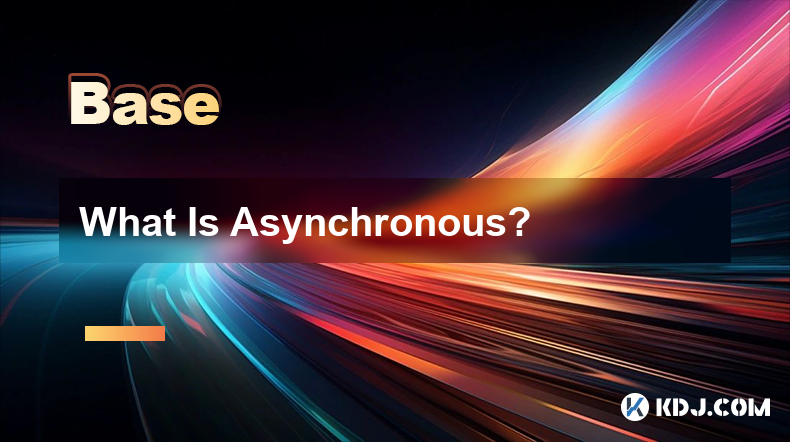
Key Points
- Definition and Benefits of Asynchronous Processing
- Types of Asynchrony in Cryptocurrency
- Challenges and Limitations of Asynchronous Processing
- Implementation of Asynchronous Techniques in Cryptocurrency
- Potential Applications of Asynchrony in Cryptocurrency
Definition and Benefits of Asynchronous Processing
In the context of cryptocurrency, asynchronous processing refers to a decentralized and distributed approach where network participants (nodes) perform tasks independently of each other without relying on a central coordinator. Unlike synchronous processing, where nodes must complete tasks in a fixed order and wait for others to finish, asynchronous processing allows nodes to work on tasks concurrently and update the network at their own pace.
This asynchronous nature offers several benefits:
- Increased Scalability: Asynchronous processing facilitates higher transaction throughput by eliminating bottlenecks and allowing nodes to handle transactions independently.
- Improved Resilience: The decentralized structure makes asynchronous networks more resilient to failures and attacks, as tasks can be completed even if individual nodes experience downtime.
- Enhanced Efficiency: By allowing nodes to work on tasks concurrently, asynchronous processing optimizes resource utilization and minimizes processing overhead.
Types of Asynchrony in Cryptocurrency
There are different types of asynchrony employed in cryptocurrency systems:
- Asynchronous Messaging: Nodes send and receive messages at different times without waiting for a response before moving on to the next task. This allows for faster and more efficient communication.
- Asynchronous Polling: Nodes periodically check for updates and respond accordingly. This approach provides flexibility and adaptability to changing network conditions.
- Asynchronous Validation: Nodes validate transactions and blocks asynchronously, allowing for faster confirmation times and reduced latency.
- Asynchronous Consensus: Nodes reach consensus on the state of the network independently, eliminating the need for a central authority to coordinate the process.
Challenges and Limitations of Asynchronous Processing
While asynchronous processing offers advantages, it also presents technical hurdles:
- Race Conditions: As asynchronous nodes operate independently, there is a potential for race conditions where multiple nodes attempt to update the network with conflicting information. Adequate synchronization mechanisms must be implemented to resolve these conflicts.
- Orphaned Blocks: Blocks created by nodes that are out of sync with the main network may not be validated, resulting in orphaned blocks that do not contribute to the blockchain.
- Network Propagation Delays: Asynchronous message delivery can introduce delays in network propagation, leading to inconsistencies in the state of the network among different nodes.
Implementation of Asynchronous Techniques in Cryptocurrency
Several popular cryptocurrency protocols incorporate asynchronous techniques:
- Bitcoin (BTC): Bitcoin uses asynchronous polling and asynchronous validation to enable scalable and resilient transaction processing.
- Ethereum (ETH): Ethereum's Proof-of-Stake (PoS) consensus mechanism introduces asynchronous validation, enhancing transaction confirmation times.
- Ethereum Classic (ETC): ETC also employs asynchronous polling and validation, providing similar advantages as Ethereum.
- Litecoin (LTC): Litecoin utilizes asynchronous validation and a faster block time to improve transaction throughput.
Potential Applications of Asynchrony in Cryptocurrency
Asynchronous techniques have various potential applications in cryptocurrency:
- Cross-Chain Interoperability: Asynchronous message passing can facilitate faster and more efficient interoperability between different blockchain networks.
- Smart Contract Development: Asynchronous smart contracts can enable parallel execution of tasks, unlocking complex and scalable use cases.
- Decentralized Applications (dApps): Asynchronous processing can optimize the performance of dApps by allowing multiple components to operate independently.
- Identity Management: Asynchronous identity verification techniques can improve the privacy and security of user authentication processes.
FAQs
What are the potential drawbacks of asynchronous processing?
While asynchronous processing offers scalability and resilience, it can lead to race conditions, orphaned blocks, and network propagation delays that need to be addressed through careful design and synchronization mechanisms.
How can asynchronous processing enhance cross-chain interoperability?
Asynchronous message passing enables faster and more efficient communication between different blockchain networks, reducing transaction latency and improving overall interoperability.
How does asynchronous processing benefit smart contract development?
Asynchronous smart contracts allow for parallel execution of tasks, unlocking more complex and scalable use cases, such as decentralized autonomous organizations (DAOs) and prediction markets.
Disclaimer:info@kdj.com
The information provided is not trading advice. kdj.com does not assume any responsibility for any investments made based on the information provided in this article. Cryptocurrencies are highly volatile and it is highly recommended that you invest with caution after thorough research!
If you believe that the content used on this website infringes your copyright, please contact us immediately (info@kdj.com) and we will delete it promptly.
- Grayscale Launches Two New Bitcoin-Themed Exchange-Traded Funds (ETFs) Targeting Income Generation
- 2025-04-03 10:15:21
- China Discovers Massive 1,000-Ton Gold Deposit in Its Northeast
- 2025-04-03 10:15:21
- Fidelity Investments introduces an individual retirement account (IRA) that permits private investors to invest in cryptocurrencies
- 2025-04-03 10:10:13
- President Donald Trump Announces Sweeping Reciprocal Tariffs on Global Imports and Declares April 2, 2025, “Liberation Day”
- 2025-04-03 10:10:13
- The price of Solana (SOL) is desperately trying to remain above important support levels amid increasing pressure
- 2025-04-03 10:05:13
- Ethereum (ETH) is again in the limelight, since technical indicators indicate bullish and network activities to a possible turnaround.
- 2025-04-03 10:05:13
Related knowledge
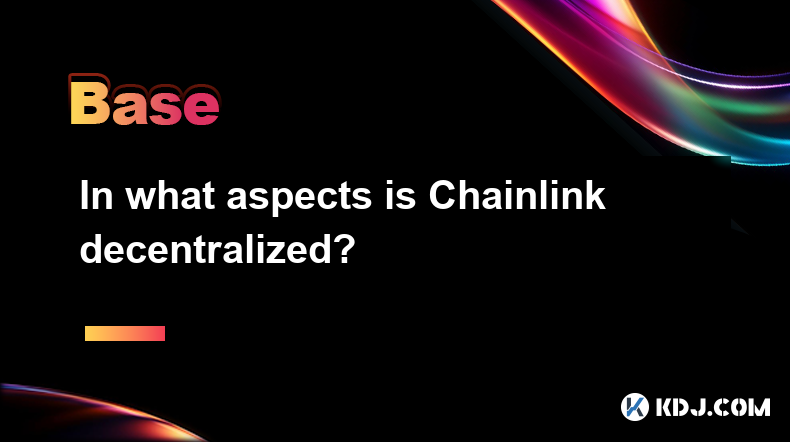
In what aspects is Chainlink decentralized?
Apr 02,2025 at 05:49pm
Chainlink is a decentralized oracle network that plays a crucial role in connecting smart contracts on blockchain networks with real-world data. Its decentralization is reflected in multiple aspects, ensuring the network's security, reliability, and integrity. This article delves into the various ways Chainlink achieves decentralization, including its n...

How does Chainlink connect smart contracts with real-world data?
Apr 02,2025 at 03:56pm
Chainlink is a decentralized oracle network that plays a crucial role in connecting smart contracts on blockchain platforms with real-world data. Smart contracts are self-executing contracts with the terms of the agreement directly written into code, but they can only interact with on-chain data. To access real-world data, such as stock prices, weather ...
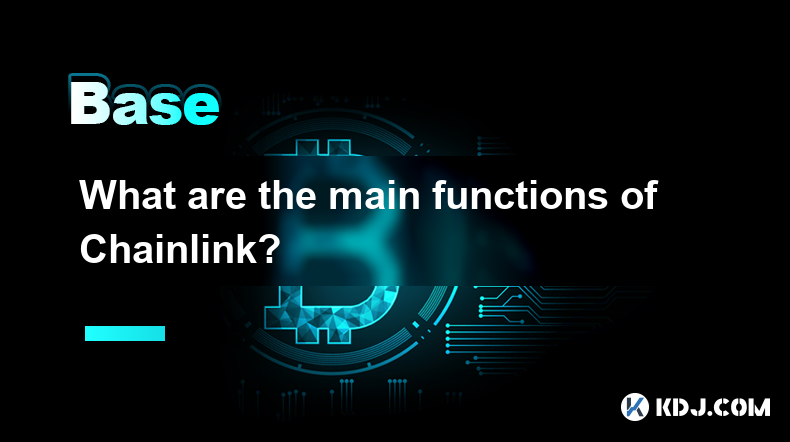
What are the main functions of Chainlink?
Apr 02,2025 at 11:49pm
Chainlink is a decentralized oracle network that plays a crucial role in connecting smart contracts with real-world data and external APIs. The primary function of Chainlink is to facilitate the seamless integration of off-chain data into on-chain smart contracts, enabling them to execute based on real-world events and information. This integration is v...

How does Chainlink work?
Apr 03,2025 at 01:50am
Chainlink is a decentralized oracle network that connects smart contracts with real-world data and external APIs. It plays a crucial role in the blockchain ecosystem by enabling smart contracts to interact with data outside their native blockchain environment. This connectivity is essential for smart contracts to execute based on real-world events and d...
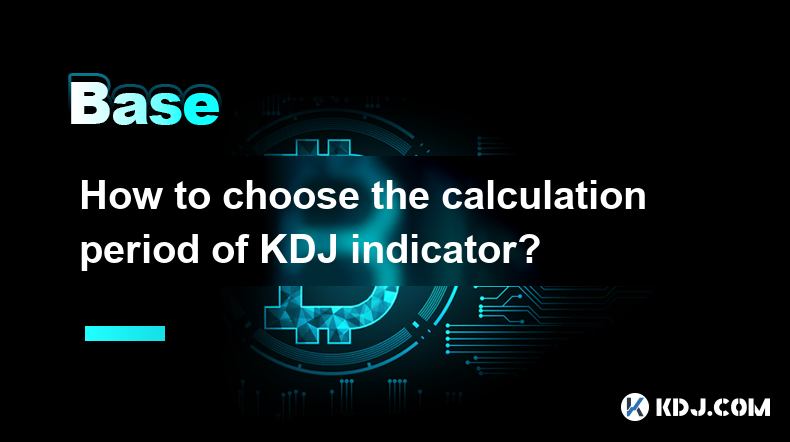
How to choose the calculation period of KDJ indicator?
Apr 02,2025 at 01:00pm
The KDJ indicator, also known as the Stochastic Oscillator, is a popular technical analysis tool used by cryptocurrency traders to identify potential buy and sell signals. The calculation period of the KDJ indicator is crucial in determining its effectiveness in predicting market trends. In this article, we will explore the factors to consider when choo...
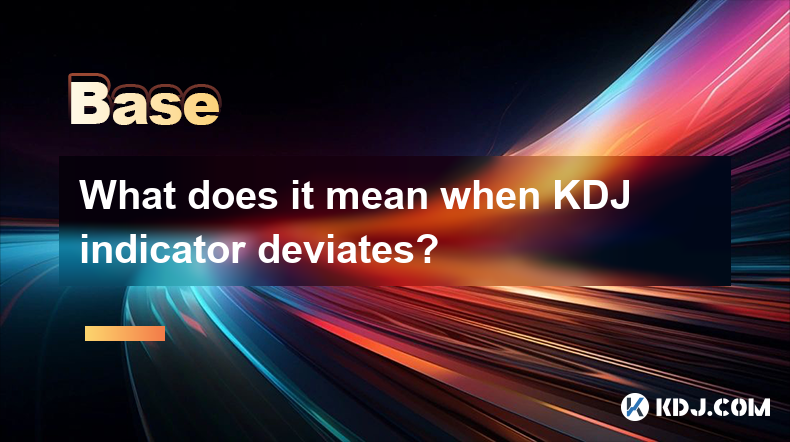
What does it mean when KDJ indicator deviates?
Apr 01,2025 at 03:08pm
The KDJ indicator, also known as the Stochastic Oscillator, is a popular technical analysis tool used in the cryptocurrency market to predict price movements. When the KDJ indicator deviates, it means that the current price of a cryptocurrency is moving away from its typical range, as indicated by the KDJ lines. This deviation can signal potential trend...

In what aspects is Chainlink decentralized?
Apr 02,2025 at 05:49pm
Chainlink is a decentralized oracle network that plays a crucial role in connecting smart contracts on blockchain networks with real-world data. Its decentralization is reflected in multiple aspects, ensuring the network's security, reliability, and integrity. This article delves into the various ways Chainlink achieves decentralization, including its n...

How does Chainlink connect smart contracts with real-world data?
Apr 02,2025 at 03:56pm
Chainlink is a decentralized oracle network that plays a crucial role in connecting smart contracts on blockchain platforms with real-world data. Smart contracts are self-executing contracts with the terms of the agreement directly written into code, but they can only interact with on-chain data. To access real-world data, such as stock prices, weather ...

What are the main functions of Chainlink?
Apr 02,2025 at 11:49pm
Chainlink is a decentralized oracle network that plays a crucial role in connecting smart contracts with real-world data and external APIs. The primary function of Chainlink is to facilitate the seamless integration of off-chain data into on-chain smart contracts, enabling them to execute based on real-world events and information. This integration is v...

How does Chainlink work?
Apr 03,2025 at 01:50am
Chainlink is a decentralized oracle network that connects smart contracts with real-world data and external APIs. It plays a crucial role in the blockchain ecosystem by enabling smart contracts to interact with data outside their native blockchain environment. This connectivity is essential for smart contracts to execute based on real-world events and d...

How to choose the calculation period of KDJ indicator?
Apr 02,2025 at 01:00pm
The KDJ indicator, also known as the Stochastic Oscillator, is a popular technical analysis tool used by cryptocurrency traders to identify potential buy and sell signals. The calculation period of the KDJ indicator is crucial in determining its effectiveness in predicting market trends. In this article, we will explore the factors to consider when choo...

What does it mean when KDJ indicator deviates?
Apr 01,2025 at 03:08pm
The KDJ indicator, also known as the Stochastic Oscillator, is a popular technical analysis tool used in the cryptocurrency market to predict price movements. When the KDJ indicator deviates, it means that the current price of a cryptocurrency is moving away from its typical range, as indicated by the KDJ lines. This deviation can signal potential trend...
See all articles
























































































